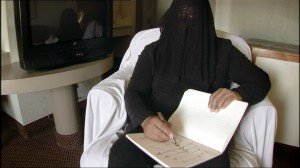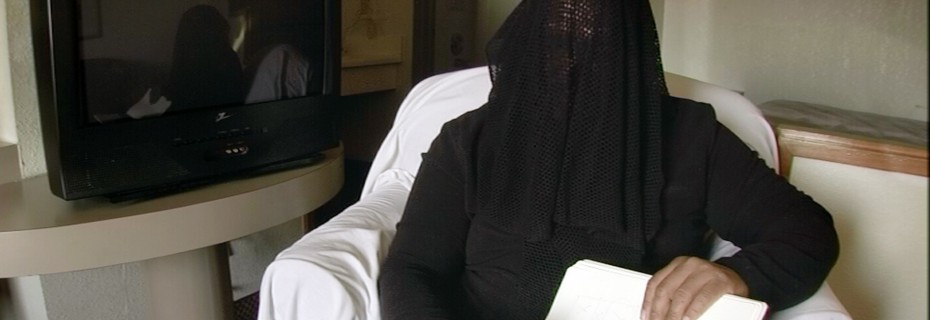‘El Sicario, Room 164’ is a haunting portrait of a cold-blooded killer

Gianfranco Rosi’s chilling new documentary, El Sicario, Room 164, is as simple and effective as they come. It stands as one of the best films of the year.
Based on an original story by Charles Bowden, the 84-minute movie proves to be an extended monologue by a former contract killer for a high-profile drug cartel in Juárez, Mexico.
With his face hidden by a black veil, the full-bodied man sits in a dingy hotel room on the southern border of the United States and begins to tell us his story. He brings us through all of the grotesqueness of his former job. How did he get involved in the drug business? What did he do to those desperate souls who owed money to the cartel? What are the details of the torture? How does he live with himself?
The man, whose identity remains concealed for the remainder of the film, not only talks into the camera, but he also draws diagrams to better illustrate his points. Using a Sharpie marker and journal, the sicario, or hit man, steps the viewer through the entire process of how the Mexican drug business has grown out of control and infested the government and police like a pesky weed.
Even more frightening is when the man in black stands up in the hotel room and reenacts some of his most heinous crimes, showing audiences how he utilized a bathtub to extract answers.
Rosi and Bowden’s testament is straightforward and effective. Except for a few cutaway scenes to the surrounding neighborhood, the spotlight is perpetually stuck on this subject. He’s never questioned or challenged about his actions; his statements feel more like a criminal’s final words right before being sentenced to death.
By not drowning the documentary in talking heads, the man’s story comes perfectly into focus. It’s a first-person account of what it’s like to play poker with the Devil. There is no watering down of the details, no pulling of punches. The sicario talks, and we need to listen.
Obviously, having a voice like this man’s is a rare development in the world of both film and journalism. These men don’t typically talk to the public or press, especially when the cameras are rolling. Because of this exclusive access, the film takes on a heightened sense of real-life drama. It’s almost as if we have been given that rare chance to be a fly on the wall. Throughout the entire film, there’s a feeling that we are not supposed to hear these stories, that retribution will be paid if this man’s identity is revealed.
We see what’s behind the wizard’s curtain, and the resulting view is depressing, dangerous and deadly.
Bowden, who has made a career out of reporting on the violence and drug transactions along the border, found this man and convinced him to talk. Rosi capitalizes on the situation by never getting in the way. There are no flashy transitions or camera angles. Most of the film is a man sitting in a chair, trying to explain his present predicament.
And what a predicament. The sicario currently has a contract out on his head for $250,000. That fact cements the audience’s perception that this testimonial is a matter of life and death.
He has never been charged for a crime in either Mexico or the United States. But, if he is to be believed, the sicario is responsible for years of slaughter.
The fact that he has found God probably doesn’t matter to his enemies. He will remain on the run until his violent past catches up to him. On this wayward dash between the killings and his own death, we are granted access for a few minutes — a few precious minutes.
We are invited to look into the broken shell of humanity. The uneasiness comes when we recognize how human the sicario seems. He’s living a life on the run, but his God-fearing blood boils just like ours.
The scariest element is that the veil doesn’t cover a monster. In El Sicario, Room 164, we realize the veil covers a man.
By John Soltes / Publisher / John@HollywoodSoapbox.com


Ok this is a must see!!!